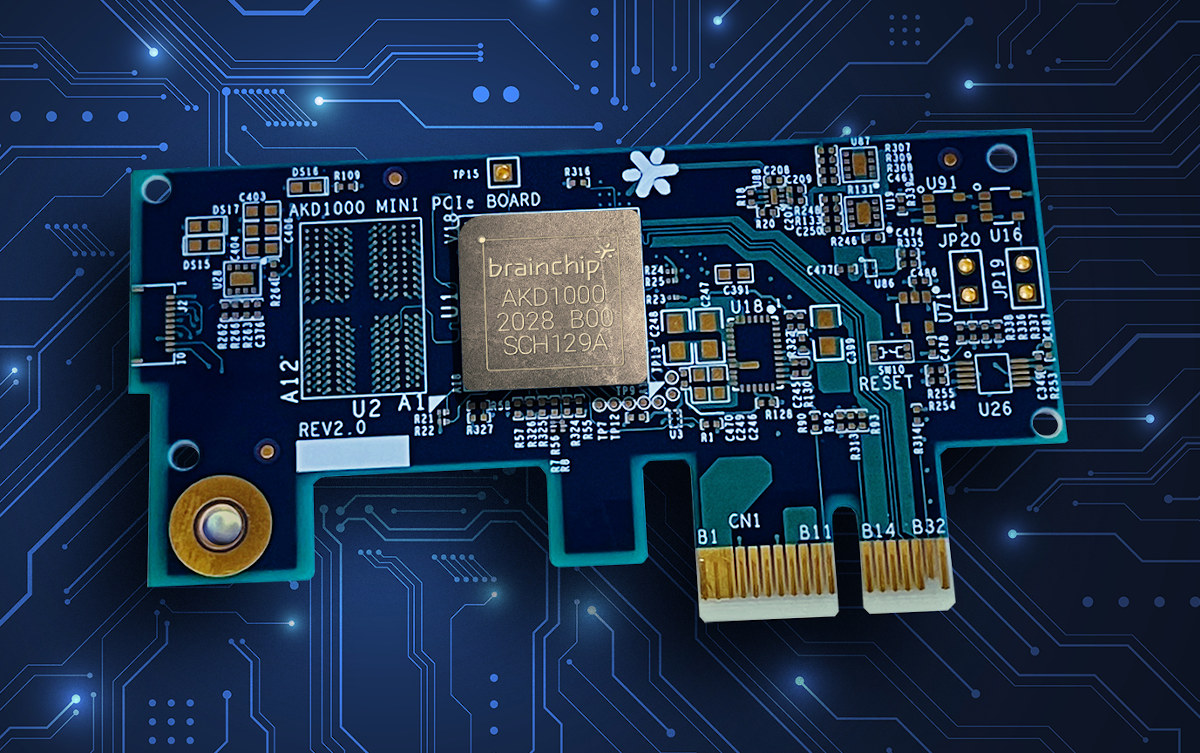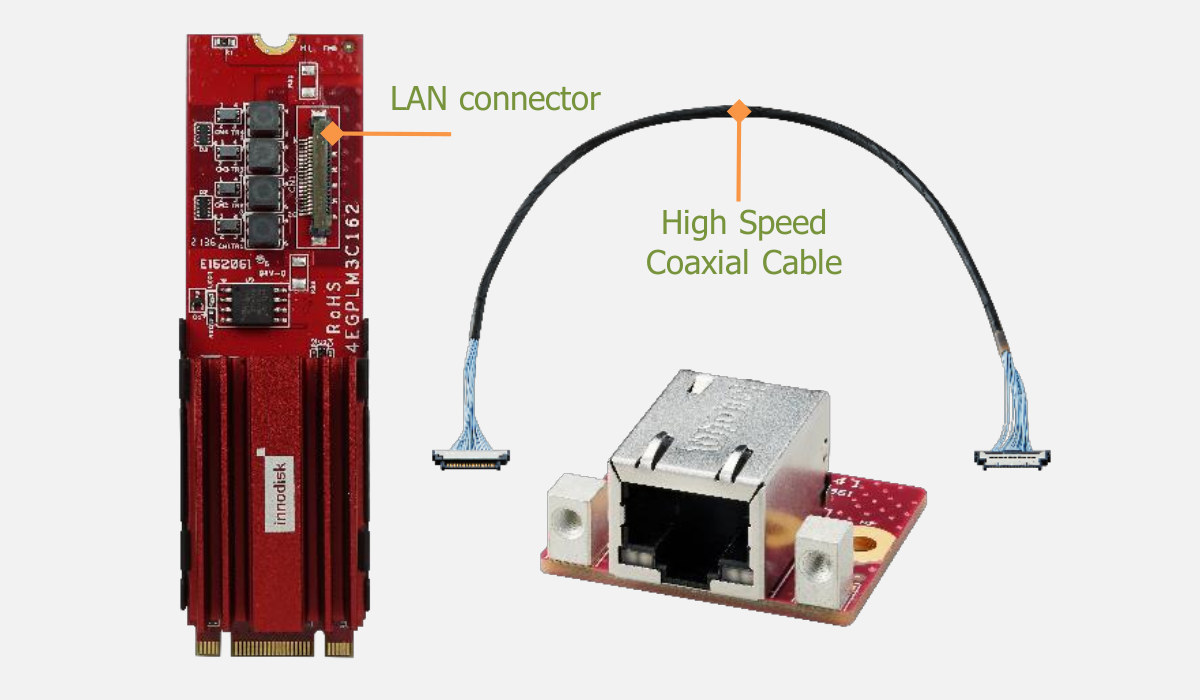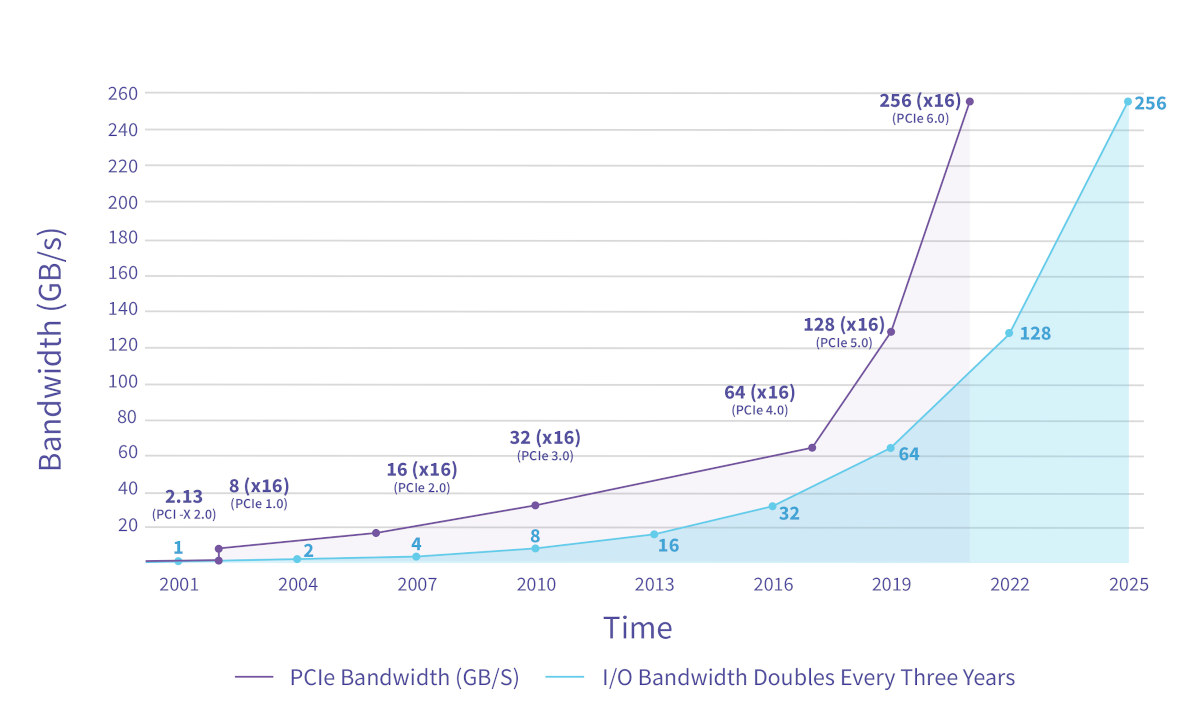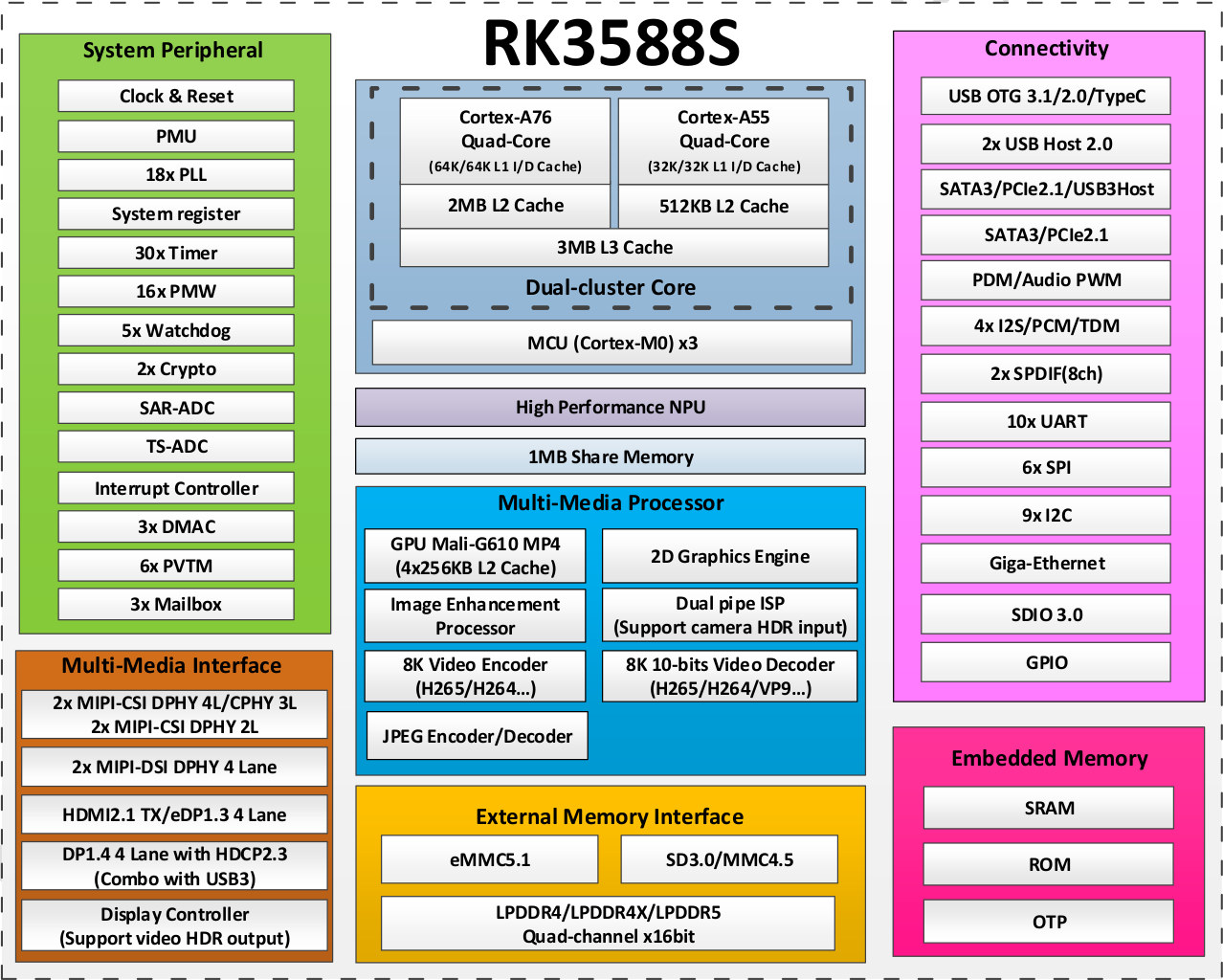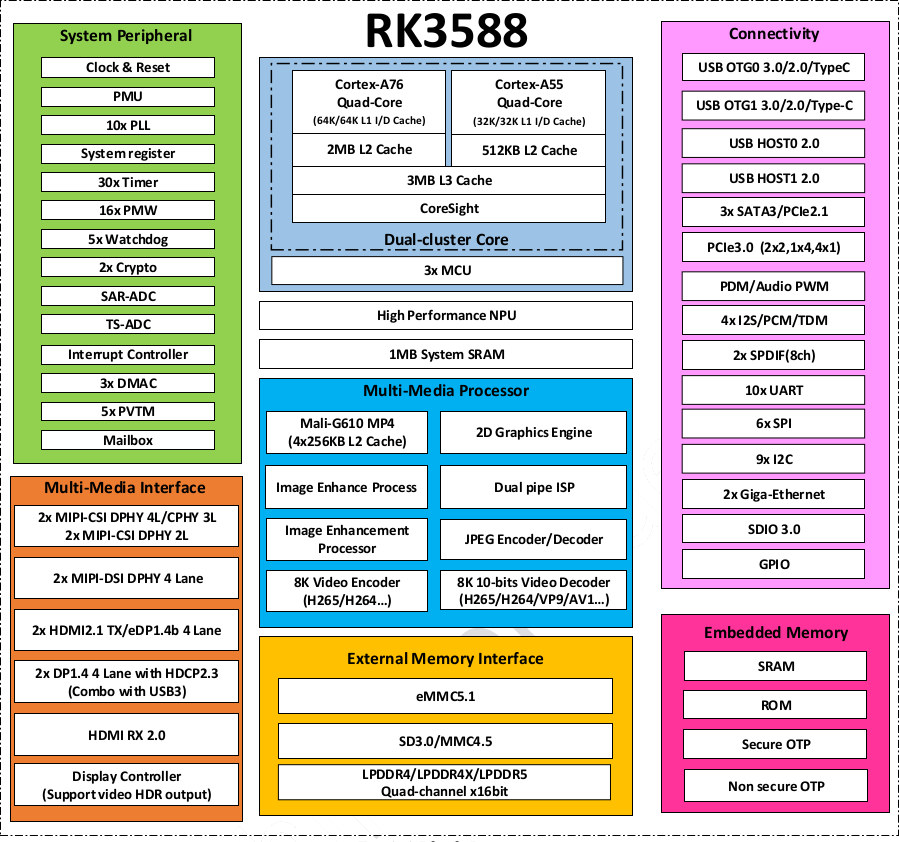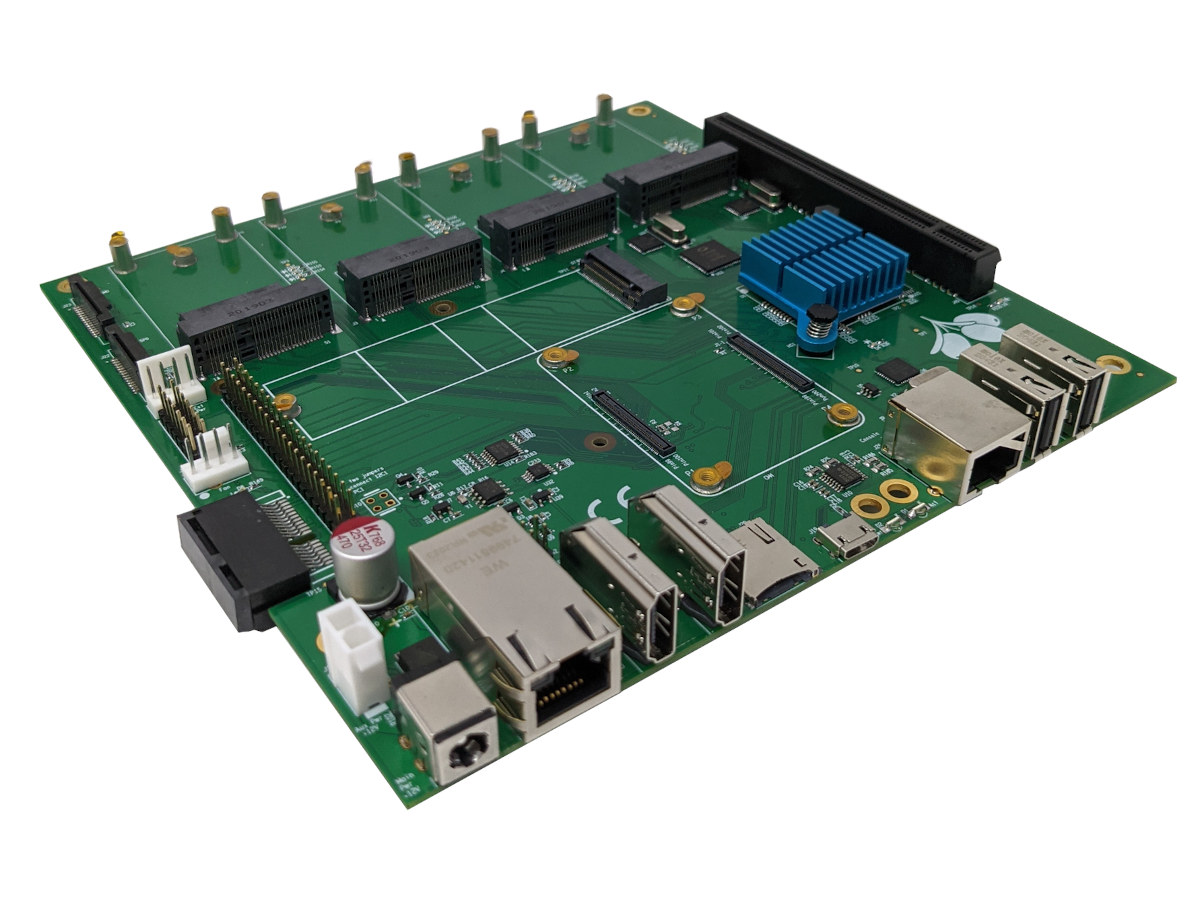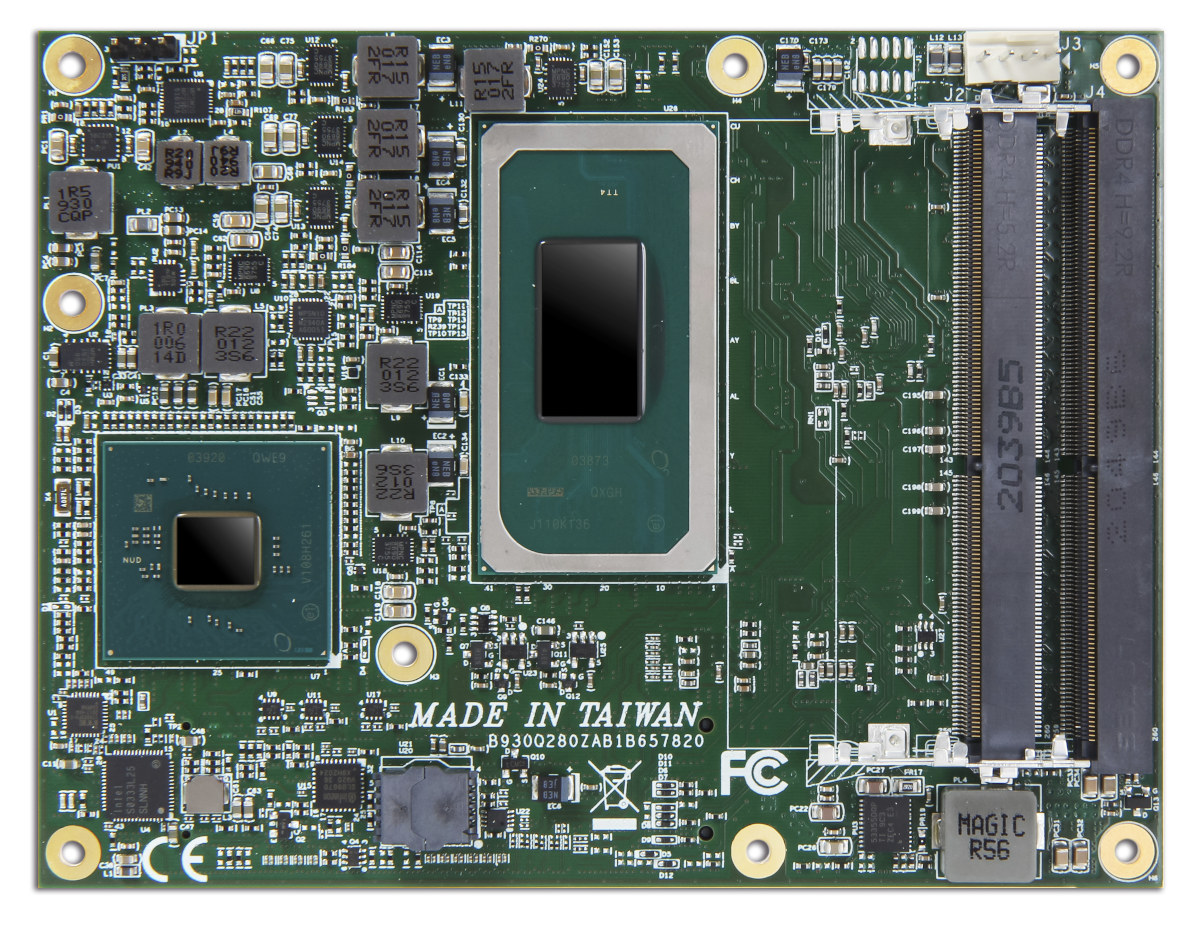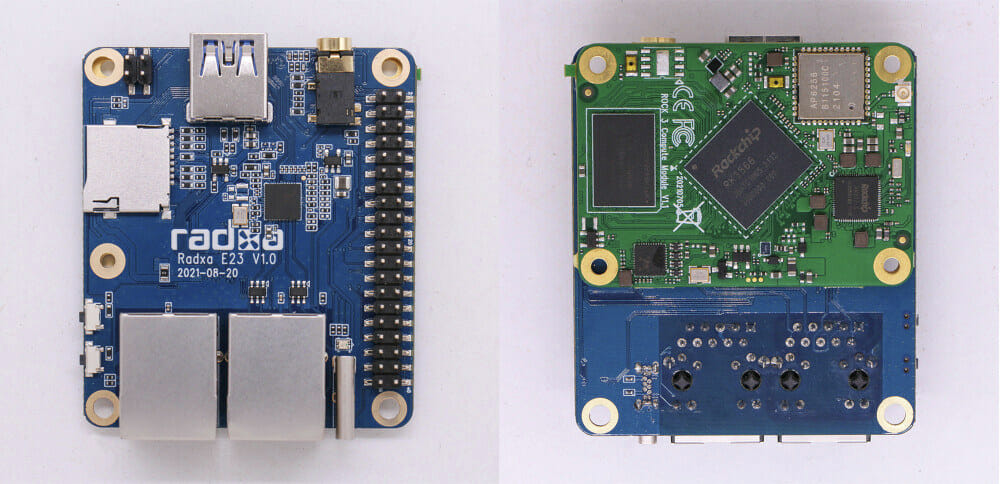BrainChip has announced the availability of the Akida AKD1000 (mini) PCIe boards based on the company’s neuromorphic processor of the same name and relying on spiking neural networks (SNN) which to deliver real-time inference in a way that is much more efficient than “traditional” AI chips based on CNN (convolutional neural network) technology. The mini PCIe card was previously found in development kits based on Raspberry Pi or an Intel (x86) mini PC to let partners, large enterprises, and OEMs evaluate the Akida AKD1000 chip. The news is today is simply that the card can easily be purchased in single units or quantities for integration into third-party products. BrainChip AKD1000 PCIe card specifications: AI accelerator – Akida AKD1000 with Arm Cortex-M4 real-time core @ 300MHz System Memory – 256Mbit x 16 bytes LPDDR4 SDRAM @ 2400MT/s Storage – Quad SPI 128Mb NOR flash @ 12.5MHz Host interface – 5GT/s PCI […]
Add 10GbE to your system with an M.2 2280 module
It’s now possible to add 10GbE through an M.2 socket thanks to Innodisk EGPL-T101 M.2 2280 module based on Marvell AQtion Ethernet controller offering support for 10Gbps, 5Gbps, 2.5Gbps, 1000M, and 100M/10M LAN speeds. The solution is comprised of three parts with the M.2 module equipped with a heatsink to cool the Ethernet controller, a flexible high-speed cable, and a daughter board with an RJ45 connector and two threads for mounting to a chassis. Innodisk EGPL-T101 specifications: Ethernet controller – Marvell AQtion likely AQC113 “single-port 6speed, 10Gbps PCIe to Multi-Gig Ethernet controller with MAC and PHY with I-grade support” M.2 input interface – PCI Express 3.0 x 2 RJ45 connector for up to 10GbE Power Consumption – Up to 2.5W (3.3V, 762mA) Dimensions (W x L x H/mm) M.2 Board: 22 x 80 x 14.5 mm (M.2 2280 form factor) Daughter Board: 31.75 x 28 x 17.7 mm Temperature Range […]
PCIe 6.0 delivers up to 256 GB/s for Big Data applications
The PCI-SIG has just released the PCIe 6.0 specification reaching 64 GT/s transfer speeds, or 256GB/s, doubling the PCIe 5.0 specification data rate, and aimed at Big Data applications in the data center, artificial intelligence/machine learning, HPC, automotive, IoT, and military/aerospace sectors. PCIe 6.0 follows PCIe 5.0 announced in 2019 and can achieve the 256GB/s data rate in a 16-lane configuration. Implementation will take time, as even PCIe 5.0 is not widely used yet, and in the embedded space, I only found PCIe 5.0 in the recently announced Alder Lake-S Desktop IoT processors, with the Alder Lake Mobile IoT processors still being limited to PCIe 4.0. PCIe 6.0 highlights: 64 GT/s raw data rate and up to 256 GB/s via x16 configuration Pulse Amplitude Modulation with 4 levels (PAM4) signaling, leveraging existing PAM4 already available in the industry Lightweight Forward Error Correct (FEC) and Cyclic Redundancy Check (CRC) mitigate the […]
Rockchip RK3588S cost-optimized Cortex-A76/A55 processor adds CAN bus, drops PCIe 3.0, other peripherals
Rockchip RK3588S is a cost-optimized version of the RK3588 octa-core Cortex-A76/A55 processor with fewer peripherals, and I’ve been told it’s been designed for tablets, but as we’ll see below, the processor will probably find its way into many other applications. We first saw RK3588S during the Rockchip Developer Event last December, but at the time we did not have any information, except it would be a lower-cost version. I’ve now received an RK3588S datasheet, so let’s have a look at the block diagram and specifications to find out what’s different. Rockchip RK3588S specifications with highlights in bold showing the differences against RK3588: CPU – 4x Cortex-A76 and 4x Cortex-A55 cores in dynamIQ configuration GPU Arm Mali-G610 MP4 “Odin” GPU with support for OpenGLES 1.1, 2.0, and 3.2, OpenCL up to 2.2 and Vulkan1.2 2D graphics engine up to 8192×8192 source, 4096×4096 destination AI Accelerator – 6 TOPS NPU 3.0 (Neural […]
Rockchip RK3588 datasheet available, SBC’s coming soon
We had most Rockchip RK3588 specifications so far for the long-awaited Cortex-A76/Cortex-A55 processor, but at today’s Rockchip Developer Conference 2021, more information surfaces with impressive CPU and GPU benchmarks, and the Rockchip RK3588 datasheet has just dropped from the sky directly into my laptop, as such document usually does. At least two single board computers are expected to soon follow from Radxa and Pine64. Rockchip RK3588 datasheet Since we have the datasheet, we can confirm some of the specifications of RK3588, and get additional details: CPU – 4x Cortex-A76 @ up to 2.4/2.6 GHz and 4x Cortex-A55 cores @ 1.8 GHz in dynamIQ configuration GPU Arm Mali-G610 MP4 “Odin” GPU with support for OpenGLES 1.1, 2.0, and 3.2, OpenCL up to 2.2 and Vulkan1.2 2D graphics engine up to 8192×8192 source, 4096×4096 destination AI Accelerator – 6 TOPS NPU 3.0 (Neural Processing Unit) VPU Video decoding 8Kp60 H.265, VP9, AVS2, […]
Seaberry Mini-ITX carrier board for Raspberry Pi CM4 exposes 11 PCIe slots and sockets
The Raspberry Pi CM4 may only have a one PCIe x1 Gen 2 interface, but this has not stopped ALFTEL from designing Seaberry, a mini-ITX carrier board for the Raspberry Pi Compute Module 4 with eleven slots and sockets making use of the single 5 Gbps PCIe Gen 2 interface. The board also offers two SATA ports, one Gigabit Ethernet port, one RJ45 console port, two HDMI ports, a micro SD card slot, two USB 2.0 ports, as well as the usual 40-pin GPIO expansion header, besides the PCIe x16 slot, a PCIe x1 side slot, and M.2 and mPCIe sockets. Seaberry carrier board specifications: Compatible systems-on-module Raspberry Pi CM4 module (Regular or Lite) Radxa CM3 Pine64 SoQuartz Storage – 1x MicroSD card for Raspberry Pi CM4 Lite, 1x M.2 socket for NVMe SSD (See PCIe expansion section) Video Output – 2x HDMI output ports, 1x MIPI DSI connector Camera […]
Portwell COM Express Tiger Lake-H module supports 2.5GbE, PCIe Gen 4, 8K, up to 64GB DDR4
Portwell PCOM-B657VGL joins other COM Express and COM HPC modules based on Intel Tiger Lake-H Xeon, Core, and Celeron embeddded processors such as ADLINK Express-TL and Congatec conga-HPC/cTLH. Just like its competitors, the Portwell COM Express Type 6 Basic module offers 8K video output, PCIe x16 Gen 4, up to 64GB DDR4, USB 3.2 Gen 2, and 2.5GbE networking for a wide range of higher-end embedded applications such as industrial automation, medical equipment, graphics-intensive applications, and artificial intelligence. Portwell PCOM-B657VGL specifications: SoC (one or the other) General Embedded Intel Celeron 6600HE dual-core processor @ 2.6GHz with 8MB L3 Cache, 16EU Intel UHD graphics, 35W TDP Intel Core i3-11100HE processor with 4 cores / 8 threads @ 2.4GHz (up to 4.4GHz in Turbo Boost) with 8MB L3 Cache, 16EU Intel UHD graphics, 45/35W cTDP Intel Core i5-11500HE processor with 6 cores / 12 threads @ 2.6GHz (up to 4.1GHz in Turbo […]
Radxa CM3 – A drop-in Raspberry Pi CM4 alternative
Radxa CM3 is a system-on-module that offers an alternative to the Raspberry Pi CM4, with the same form factor allowing it to become a drop-in replacement, but switching from a Broadcom BCM2711 processor to a Rockchip RK3566 quad-core Cortex-A55 SoC. Radxa CM3 will work with existing carrier boards for the Raspberry Pi Compute Module 4, albeit some features such as dual HDMI are not available, instead, providing a single HDMI, but the module also offers extra features through an additional 100-pin board-to-board with interfaces such as SATA III and USB 3.0. Let’s compare Radxa CM3 specifications to the ones of Raspberry Pi CM4. Comparing Broadcom BCM2711 quad-core processor and Rockchip RK3566, as the Cortex-A72 may still be faster on some workloads despite the lower frequency, and some other workloads may be dramatically faster on RK3566, for example for those using Armv8 Crypto extensions missing on all Raspberry Pi, which we […]


